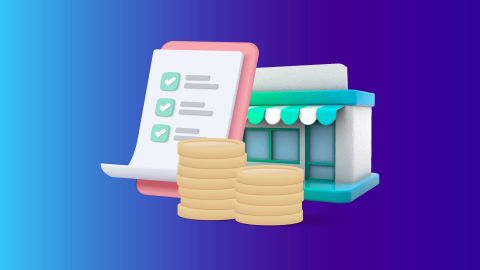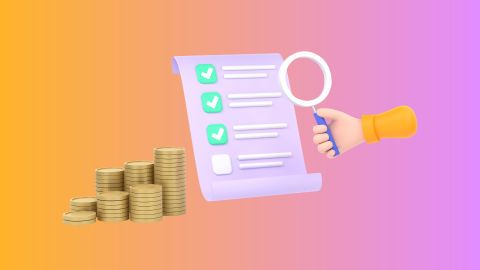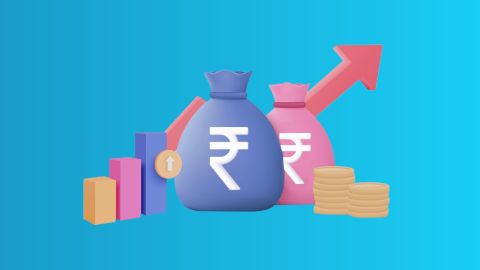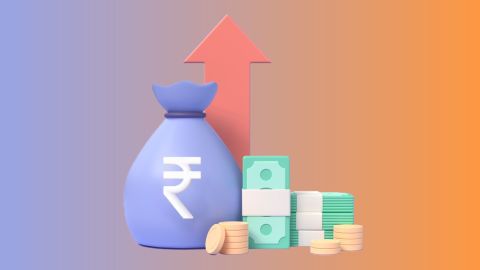Your balance sheet has two parts: Assets and liabilities. Assets are the things your company owns that can help make money in the future. Liabilities are what your company owes to others. Simply put, assets bring money in, and liabilities take money out.
What are assets?
An asset is anything valuable that an individual or business owns, which has the potential to generate income or provide future benefits. It can take various forms, including cash in the bank, real estate such as houses or land, investments like stocks, bonds, or mutual funds, and tangible assets like machinery, vehicles, or equipment. Assets are crucial for building wealth, supporting financial growth, and meeting long-term goals. They also provide a safety net in times of financial need, as they can be sold or leveraged to cover expenses or invest in new opportunities, ensuring financial stability and growth.
In India, understanding assets is crucial for both individuals and businesses, especially when seeking financial products like business loans. Properly managed assets can enhance creditworthiness and improve the chances of securing favourable loan terms, facilitating growth and development.
Types of assets
Here are a few common types of assets owned by a business:
Current assets
Current assets are short-term resources that can be easily converted into cash within a year. Examples include cash, inventory, and accounts receivable. These assets are essential for meeting day-to-day operational expenses and liquidity needs, ensuring smooth business operations.
Fixed assets
Fixed assets are long-term resources such as buildings, machinery, or equipment used for business operations. These are not easily converted into cash and provide lasting value over time, contributing to production or services. They are typically subject to depreciation over their useful life.
Tangible assets
Tangible assets are physical items with a monetary value, like land, buildings, machinery, and inventory. These assets are crucial for the operations of a business and can be sold or used to generate income. They are easier to value and account for compared to intangible assets.
Intangible assets
Intangible assets are non-physical resources that hold financial value, such as patents, trademarks, copyrights, and brand reputation. These assets can provide competitive advantages and contribute to long-term profitability. While they lack physical form, they play a key role in driving business growth.
Operating assets
Operating assets are resources actively used in the daily operations of a business, such as machinery, inventory, and cash. These assets are crucial for revenue generation and business functionality, directly contributing to the production of goods or services that a company provides.
Non-operating assets
Non-operating assets are resources that do not directly contribute to the day-to-day operations of a business. Examples include investments, unused property, or assets held for sale. While they do not aid immediate revenue generation, they can provide financial support through sales or liquidation.
What are liabilities?
Liabilities refer to the financial obligations or debts that an individual or a business owes to external parties. These obligations arise from past transactions or events and are expected to result in an outflow of economic resources, such as cash or other assets. Liabilities are categorised into two main types: current liabilities and long-term liabilities.
Types of liabilities
Liabilities are financial obligations that a business or individual owes to others. Understanding the different types of liabilities is crucial for effective financial management and planning, ensuring long-term financial health and stability.
Current liabilities
Current liabilities are short-term financial obligations that are due for payment within one year. These include accounts payable, short-term loans, accrued expenses, and other similar obligations. For businesses, managing current liabilities efficiently is vital to maintaining liquidity and ensuring smooth operational activities. In the personal finance context, current liabilities may include credit card debts, utility bills, and other short-term borrowings.
Long-term liabilities
Long-term liabilities are financial obligations that are due for payment over a period longer than one year. These include long-term loans, bonds payable, mortgage loans, and other similar obligations. Managing long-term liabilities involves strategic planning to ensure that there are sufficient resources to meet these obligations without jeopardising the financial stability of the individual or business.
In India, liabilities play a significant role in personal and business finance. Understanding and managing liabilities is crucial for maintaining a healthy financial position and ensuring the ability to meet financial commitments. When considering financial products like business loans, having a clear understanding of existing liabilities helps in making informed decisions and developing effective repayment strategies.
Assets vs Liabilities
| Aspect | Assets | Liabilities |
| Definition | Valuable resources owned | Financial obligations owed |
| Examples | Cash, inventory, real estate, patents | Loans, accounts payable, mortgage |
| Economic impact | Generate future economic benefits | Result in outflow of economic resources |
| Balance sheet | Recorded on the asset side | Recorded on the liability side |
| Types | Tangible and intangible | Current and long-term |
| Financial health | Indicator of wealth and resources | Indicator of debts and obligations |
| Management focus | Utilisation and enhancement | Repayment and minimisation |
| Role in credit | Improves creditworthiness | Affects creditworthiness |
| Business growth | Facilitates expansion and revenue generation | Can restrict financial flexibility |
Conclusion
Understanding the difference between assets and liabilities is fundamental for effective financial management. Assets represent the resources that provide economic value, while liabilities signify the obligations that need to be met. In the dynamic financial landscape of India, a strategic approach to managing assets and liabilities can significantly impact overall financial health and growth prospects.
Exploring Bajaj Finserv Business Loans
Here are some of the key advantages of our business loan that make it an ideal choice for your business expenses:
- Rapid disbursement: Funds can be received in as little as 48 hours of approval, allowing businesses to respond promptly to opportunities and needs.
- High loan amount: Businesses can borrow funds up to Rs. 80 lakh, depending on their needs and qualification.
- Competitive interest rates: The interest rates for our business loans range from 14 to 26 per annum.
- Flexible repayment schedules: Repayment terms can be tailored to align with the business's cash flow, helping manage finances without strain. You can choose a tenure ranging from 12 months to 96 months.




